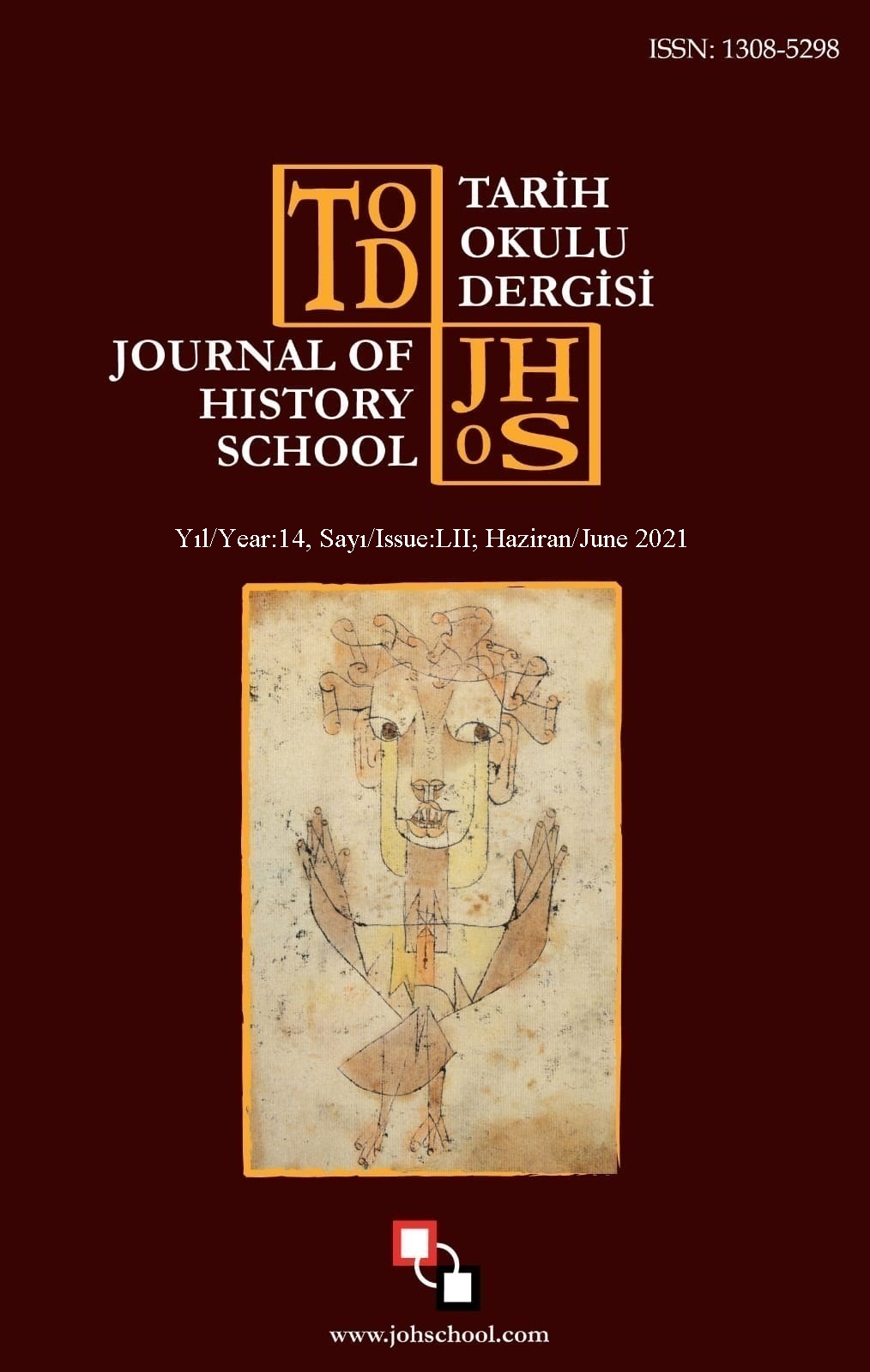Author :
Abstract
Salgın hastalıklar demografik, siyasi ya da ekonomik açıdan değişime yol açmanın yanında dini inançlar bağlamında da bir takım değişikliklere sebebiyet vermişlerdir. Bu durum özellikle çok tanrılı inanışlara sahip olunan antik dönemde daha yoğun bir biçimde izlenmektedir. Bu çalışma antik Roma’nın Krallık ve Cumhuriyet dönemlerinde yaşanmış olan salgın hastalıklar sırasında Roma pantheonuna eklenen tanrıları, tanrıçaları ve yabancı bir takım dini uygulamaları konu almaktadır. Salgın hastalıkların her toplumda panik ve çaresizliğe sebep olduğu bilinmektedir ve bu durum elbette özellikle tıp bilgisinin yetersiz kaldığı antik dönem toplumlarında kutsala yönelmede daha fazla etkili olmuştur. Çalışmada özellikle Roma’da bahsi geçen dönemlerde yaşanan salgınlar hakkında bilgi veren antik kaynakların aktarımlarından faydalanılmış ve bu çerçevede Roma dininin süreç içerisinde geçirdiği değişimin ve salgınların bu değişimdeki rolü üzerinde durulmuştur. Yunan kültürünün yoğun etkisi yanında salgınların da Roma pantheonuna yeni tanrılar ve yeni ritüeller eklenmesine sebebiyet verdiği ve zamanla bu kültlerin ve uygulamaların Roma dininin ve kültürünün bir parçası olması dikkat çekicidir. Bunun dışında salgınlara ilişkin aktarımlar Roma’nın erken dönemlerinde Etrüsk ve Yunan kültürleri ile iletişimini ve etkileşimini göstermesi bakımından da ayrıca önem taşımaktadır. Sonuç olarak, salgınlarla mücadelede Roma, hastalıkların tanrıların cezalandırma yöntemi olarak gönderilmiş olduğu düşüncesiyle kutsala yönelmiş, kendi tanrılarından cevap alamadığı noktada ise yabancı inanış ve uygulamaları benimseme yoluna gitmiştir.
Keywords
Abstract
Epidemics have led to demographic, political or economic changes and several changes in the context of religious beliefs. This situation is seen more intensively, particularly in antiquity, where polytheistic beliefs were held. This study focuses on the gods, goddesses and a number of foreign religious practices that were added to the Roman pantheon during the epidemics that occurred during the Kingdom and Republic periods of ancient Rome. It is known that epidemics cause panic and despair in every society, and of course, this situation has been more effective in orienting towards holiness, particularly in ancient societies where medical knowledge was insufficient. The study used the transmission of ancient sources of information on epidemics in the periods mentioned before, particularly in Rome. In this framework, the focus was on the change that the Roman religion has undergone in the process and the role of epidemics in this change. It is worth noting that, in addition to the powerful influence of Greek culture, epidemics have also contributed to the addition of new gods and new rituals to the Roman pantheon, and over time these cults and practices have become part of Roman faith and culture. Apart from this, the transmissioned information of epidemics is also important since it shows Rome’s communication and interaction with the Etruscan and Greek cultures in the early stages. As a result, in the fight against epidemics, Rome oriented towards holiness with the idea that diseases were sent as a method of punishment by the gods, and at the point where they could not get answers from their gods, they went on the path of adopting foreign beliefs and practices.





